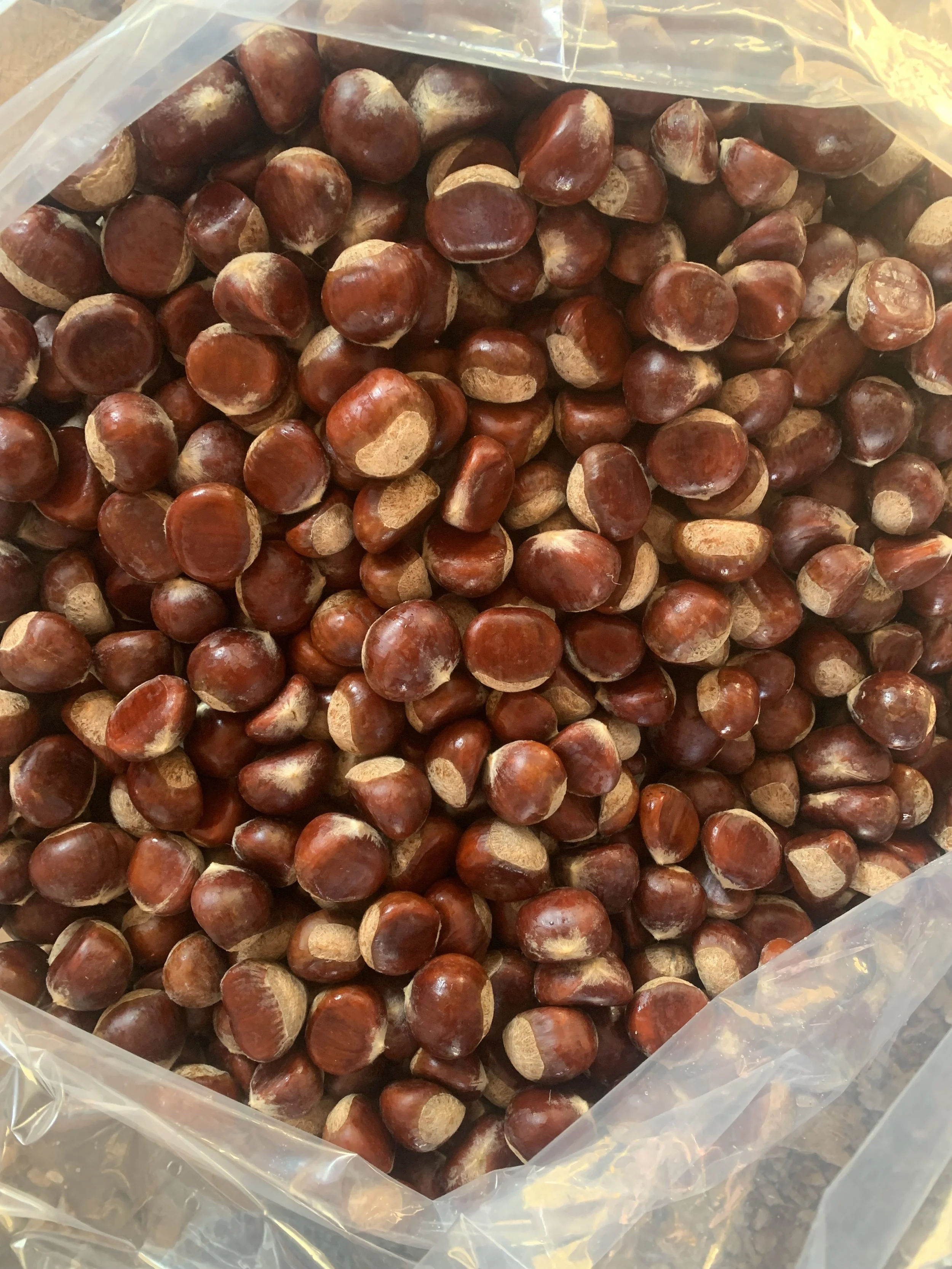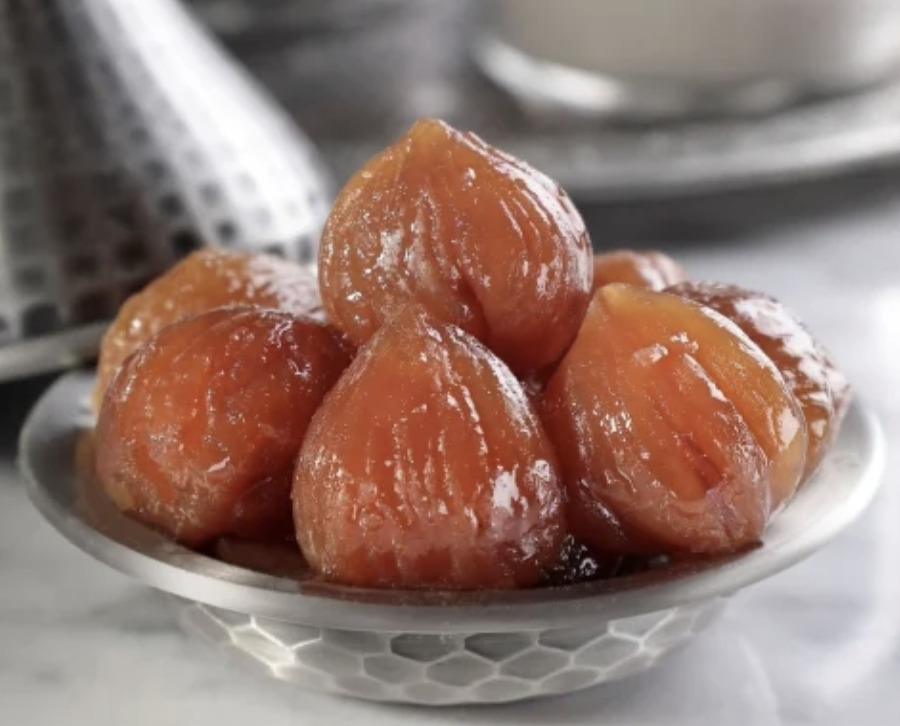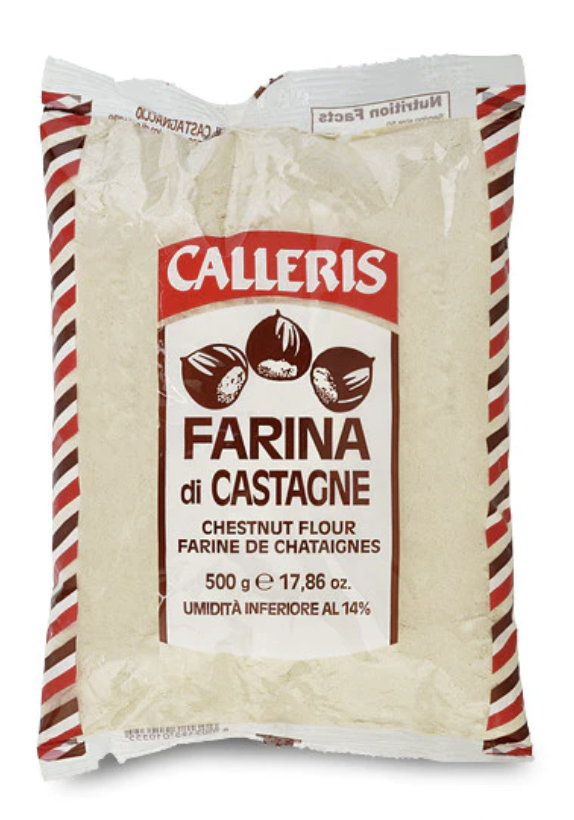Cracking the Nut: Understanding US Chestnut Production in a Global Context
Once a staple food and timber source throughout the Eastern US, the American chestnut was the dominant hardwood tree from Georgia to Maine before C. parasitica (chestnut blight) decimated an estimated 4 billion trees in the first half of the 20th century. While efforts to breed blight resistance into American chestnuts have made significant progress since the appearance of the blight, small clusters of commercial production with non-American genetics have emerged throughout the Eastern US in the last 60 years.
Today, the United States is well-positioned to expand production of chestnuts to support growing demand from both US and global consumers. In this post, we’ll outline the investment case for chestnut agroforestry systems and review the historical and current market dynamics that inform why chestnuts represent a worthwhile opportunity for farmers and farmland asset managers alike.
Chestnut Industry: Context
Historically, the US chestnut industry’s growth was limited by gaps in R&D and farmer awareness. The recent scaling-up of chestnut production has been made possible by 60 years of on-farm breeding for high-yielding, regionally-adapted cultivars — compounded by university trials beginning in the late 90’s selecting for disease resistance and commercializable traits (Revord et al 2020). These efforts are now bearing fruit: Early adopters are unable to meet growing domestic demand, rapidly selling out of chestnuts and chestnut products (Crawford, 2023; Gold, 2005; Chestnut Growers Inc, 2024), while collaborative breeding efforts are resolving nursery supply chain bottlenecks that previously limited growth.
Pistachios: A Point of Reference
The US pistachio industry provides a point of reference for how the budding chestnut industry can grow demand alongside production. Until the mid-1970’s, pistachio production in the US was limited by technology gaps and prevailing practice. Refined production methods and improved genetics — paired with public policies incentivizing growers to plant pistachios, a favorable export market, and strategic marketing — led to its rapid commercialization (Borris, 2005)
Several key similarities exist between chestnuts in 2023 and pistachios in 1976:
The export market for chestnuts is unsaturated and growing (UN Comtrade), with some of the world’s leading producers unable to meet domestic demand (Bozoglu et al, 2019; Beccaro et al, 2020).
Technology and nursery supply chain bottlenecks no longer limit commercial-scale production of chestnuts, and public policies subsidizing climate smart agriculture are catalyzing its planting.
The chestnut’s nutritional, flavor, and ecological profiles align closely with evolving consumer preferences, lending itself to strategic marketing to drive domestic consumption.
Chestnut Market
Global Production & Supply
The global chestnut market reached US $3.7 Billion in 2023 and is projected to grow at a compound annual growth rate of 3.22% between 2024-2032, reaching a total market size of $4.9 Billion by 2032 (IMARC Group, 2024).
While chestnuts represent a smaller but growing portion of the overall tree nut market, they are unique from cashews, walnuts, almonds, and pistachios because of their suitability for Eastern US production and potential as a gluten-free staple crop with a nutrient profile akin to corn, soy, or wheat.
The top 5 countries producing chestnuts include China, Spain, Turkey, Greece and Italy, with global chestnut production totaling 2.13M metric tons in 2022 (FAO Stat). China produces 80% of the global chestnut supply (MacFarland, 2024); the majority of China’s chestnuts are consumed domestically.
Global Demand & Consumption
Global Export Trade Volume: 106,457 metric tons in 2022 (FAO Stat). The majority of chestnut consumption occurs in Asia and Europe, specifically China and Italy. China consumes 1.6 million metric tons, or 80% of the global share of production. Italy is the largest importer, making up 15.9% of the total global import volume (OEC, 2022).
US Production & Supply
Despite an estimated 95M acres of land suitable for growing chestnuts in the Eastern US alone (UNH Extension), American output represents less than 1% of total worldwide chestnut production.
Official estimates indicate that the US has 4,200 acres in production of chestnuts across 1,587 farms (AgMRC, 2024). 2022 USDA census data indicates bearing and nonbearing acreage totaled 10,049 acres across 2,845 growers (USDA NASS) - an average farm size of 3.5 acres. The majority of US chestnut production occurs on farms smaller than 10 acres in size that sell their crop locally (Gold et al, 2005) which Propagate estimates produce for sale an estimated 1,500 to 2,000 metric tons (3 to 4.4m lbs) of nuts for mostly direct retail consumption.
US Demand & Consumption
The US consumes about 7.5 million lbs of imported chestnuts annually (does not include local markets), or the equivalent of 3,400 metric tons. This means US consumers eat <0.1 lbs per capita, significantly less than the 5.7 lbs per capita in China, Korea and Japan or 1 lbs per capita in Europe (Fang et al, 2019). Despite lower relative consumption, most US producers report that domestic demand for fresh nuts exceeds supply.
The primary demographic consuming chestnuts within the US are immigrants and New Americans from cultures with higher rates of chestnut consumption – Europe & Mediterranean countries, Asia, Russia India, and the Middle East (Davison et al, 2021) Additional consumption data suggests that young people with higher levels of education, primary shoppers, and vegetarians/vegans are also more likely to consume chestnuts (Fang et al, 2019).
Market Drivers
Beyond immigrant populations, a number of market forces will continue to drive demand domestically across the U.S, including growing interest in plant-based and gluten-free diets, climate friendly foods, and the role of nostalgia and tradition in food culture.
Health Trend Drivers
An estimated 25% of Americans self-report gluten sensitivity (Reed, 2020), compared to 10% globally (Barbaro et al, 2020). Chestnuts are a gluten free, resistant starch (fiber) that is naturally sweet in flavor, yet low glycemic and high in vitamin C & minerals. Studies suggest chestnut flour as an additive can increase the elasticity, texture, and nutritional & flavor profile of gluten free breads (Marciniak-Lukasiak et al 2022). These traits are rare, making them suitable for diets that straddle gluten-free, plant-based, low-fat & paleo trends. Additionally, these traits make it attractive for CPG formulations in the health food segment.
Climate Trend Drivers
Chestnuts are one of the few nuts that have both a carbon negative & water positive environmental impact. As such, consumers and companies searching for beneficial environmental outcomes will be attracted to chestnuts as a crop. Products with ESG-related claims have seen 28% growth relative to standard products at 20% growth (Bar Am et al, 2023), and CPGs continue to launch carbon-neutral certified products to capitalize on this demand (Casey, 2022).
Nostalgia Drivers
While chestnuts are typically associated with US holidays Thanksgiving and Christmas, Americans had a more robust connection to chestnuts before the blight effectively eliminated the nut’s presence from food culture. Exposure to quality, US-grown nuts provides a modern revival for a gluten-free nut that was once a year round staple food for many Americans (Gershon, 2018). The way you tell your story online can make all the difference.
Taste Drivers
Anecdotally, people who re-discover chestnuts love them. Early efforts to advance value-added chestnut products in the US have met much success, with growers, bakers and retailers selling out within several weeks (Crawford 2023). Regional collaborations between chefs, bakeries, farmers, and other enterprises, such as the Appalachian Staple Foods Collaborative, continue to advance chestnut food culture, while coordinated chestnut marketing campaigns have generated national buzz while drawing the attention of influencers and celebrity chefs (Malone, 2021). Their unique flavor profile is prized in the culinary world, and the nuts are functionally versatile, lending themselves to a variety of preparations including bread, biscuits, pasta, liquors, beers, etc. (Guiné, 2021). The sweet flavor of chestnuts also lends itself well to an American palette.
Import / Export Dynamics
It’s important to note that chestnuts are a fresh nut that requires refrigeration. While this adds the complexity and cost of cold-chain distribution to marketing and distribution, it can also differentiate American grown nuts by capitalizing on demand for fresh, Grade A nuts, as well as growing demand for value-added products such as gluten free flours. Studies of buyer behavior indicate that Americans strongly prefer fresh, locally-grown chestnuts over imported nuts – and are willing to pay higher prices for them (Cernusca et al, 2012).
Imports are also generally of inferior quality (Vossen, 1996). This is due to B-grade nuts being sold through export and storage inconsistencies throughout the cold-chain. Chestnuts that are properly marketed and distributed will benefit from the price premium of quality produce, and consequently the downsides of poorly executed shipping and handling. Given this reality, American-grown chestnuts can benefit from shorter supply chains when sold into US markets, and can also capitalize on modernized cold-chain logistics when shipping internationally.
Climate Change
Climate change already impacts global markets and will continue to affect production worldwide as it intensifies: European chestnut supply is already under significant pressure from climate change due to increased heat stress & drought (Freitas et al 2021). Climate stress can exacerbate diseases such as Ink Disease and Chestnut Blight, which threaten the production of European chestnut varieties and drive imports.
Chestnut trees also support agricultural climate change mitigation and adaptation: Trees sequester carbon in above and below ground biomass, while enhanced tree and forest cover can better protect landscapes and farms against extreme weather events (MacFarland, 2024).
Conclusion
The US is well-positioned to meet growing domestic and global demand for tree nuts by expanding production of chestnuts in the eastern half of the country, where the chestnut tree once served as a staple food source. In a following post, we’ll share more on the unit economics of chestnut production and the type of returns farmers and investors can expect. If you are interested in learning more about chestnuts and whether or not they might be a fit for your land or portfolio, contact us here.
Propagate is a regenerative agriculture platform that makes it easy for farmland owners to design, plant, and manage agroforestry systems so that they can increase the cash yield of farmland.
Photo of a chestnut-hay alley cropping system in Maysville, Kentucky.
Get Involved with Chestnuts in the U.S.A.
Data & Referenced Materials compiled by Propagate and Agroforestry Partners
References:
AGMRC. (2024). Chestnuts. Agricultural Marketing Resource Center. Retrieved from [Link].
Bar Am, J., et al. (2023). Consumers Care about Sustainability—and Back It up with Their Wallets. McKinsey and NielsenIQ, 24 Feb. 2023.
Barbaro, M. R., et al. (2020). Non-Celiac Gluten Sensitivity in the Context of Functional Gastrointestinal Disorders. Nutrients, 12(12), 3735. [Link].
Beccaro, G., et al. (Eds.). (2019). The Chestnut Handbook: Crop & Forest Management (1st ed.). Boca Raton: CRC Press. [Link].
Boriss, H. (2005). Commodity Profile: Pistachios. Issue brief. Davis, CA: Agricultural Marketing Resource Center, pp. 1–7.
BOZOĞLU, M., et al. (2019). Türkiye Kestane piyasasındaki gelişmeler. Kahramanmaraş Sütçü İmam Üniversitesi Tarım ve Doğa Dergisi, 22(1), pp. 19–25. doi:10.18016/ksutarimdoga.vi.430319.
Casey, C. (2022). 8 Carbon-Neutral Brands Aiming to Cut the Food and Beverage Industry’s Emissions. Food Dive. Retrieved from [Link].
Cernusca, M.M., et al. (2012). Post-purchase evaluation of U.S. consumers’ preferences for chestnuts. Agroforest Syst, 86, 355–364. [Link].
Chestnut Growers Inc. Available at: [Link] (Accessed: 25 March 2024).
Crawford, K. (2023). Corn, soybeans and ...chestnuts? Ohio farmers find new uses for the uncommon crop, WOSU Public Media. Available at: [Link] (Accessed: 25 March 2024).
Davison, B. et al. (2021) OVERCOMING BOTTLENECKS IN THE EASTERN US CHESTNUT INDUSTRY: An Impact Investment Plan. rep. Savannah Institute. Available at: [Link] (Accessed: 2024).
FAOStat. Available at: [Link] (Accessed: 25 March 2024).
Fang, M., et al. (2019). A Hard Nut to Crack: Identifying Factors Relevant to Chestnut Consumption. Food Distribution Research Society. Available at: [Link] (Accessed: 25 March 2024).
Guiné, Raquel. “A Review of the Use of Chestnut in Traditional and Innovative Food Products.” Journal of Nuts, vol. 14, no. 1, Mar. 2021.
Fresh/Dried Chestnuts (2022). The Observatory of Economic Complexity. Available at: [Link].(Accessed: 25 March 2024).
Freitas TR, et al. (2021). Influence of Climate Change on Chestnut Trees: A Review. Plants (Basel), 10(7), 1463. doi: 10.3390/plants10071463.
Gershon, L. (2018). When Chestnuts Were an Everyday Food. JSTOR Daily. Retrieved from daily.jstor.org/when-chestnuts-were-an-everyday-food/
Gold, M., et al. (2005). Chestnut Market Analysis Producers’ perspective. rep. Columbia, MO: UMCA, pp. 1–32.
IMARC Group. Chestnut market size, share, industry report 2024-2032. Available at: [Link] (Accessed: March 2024).
MacFarland, K. (no date). Chestnuts: A perennial opportunity for Northeast Farms, USDA Climate Hubs. Available at: [Link] (Accessed: 25 March 2024).
Malone, T. (2021). Identifying Factors Relevant to U.S. Chestnut Consumption. Chestnut Grower, Spring 2021.
Marciniak-Lukasiak, K., et al. (2022). The Influence of Chestnut Flour on the Quality of Gluten-Free Bread. Applied Sciences, 12(16), 8340. [Link]
Reed, L. (2020). Study concludes Americans self-diagnose to adopt gluten-free diets, Nebraska Today | University of Nebraska–Lincoln. Retrieved from [Link] (Accessed: 25 March 2024).
Revord, R.S., et al. (2022). A roadmap for participatory chestnut breeding for nut production in the Eastern United States. Frontiers in Plant Science, 12. doi:10.3389/fpls.2021.735597.
United Nations Comtrade. Available at: [Link] (Accessed: 25 March 2024).
University of New Hampshire Extension, Restoring the American Chestnut. Available at: [Link] (Accessed: 25 March 2024).
USDA/NASS QuickStats, United States Department of Agriculture National Statistics Service. Retrieved from: [Link]. Accessed 2024.
Vossen, P. (1996, March/April). Chestnuts. UC ANR Small Farms Network. Retrieved from [Link].













